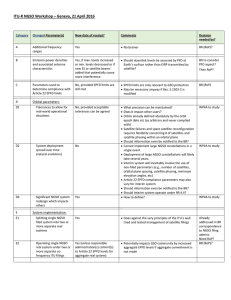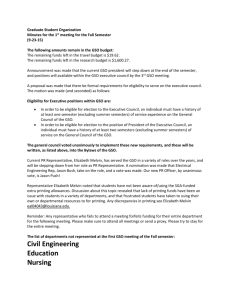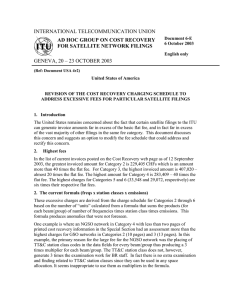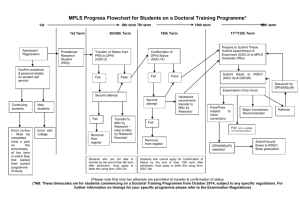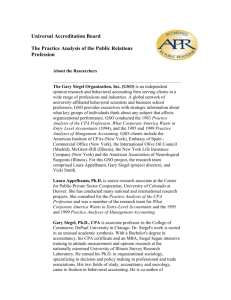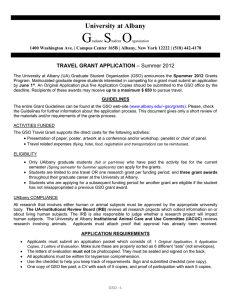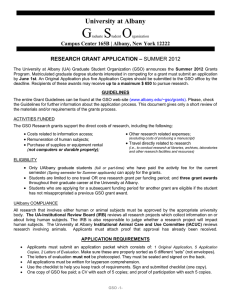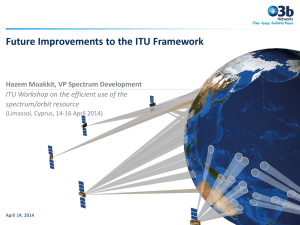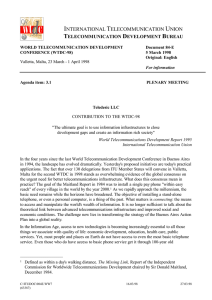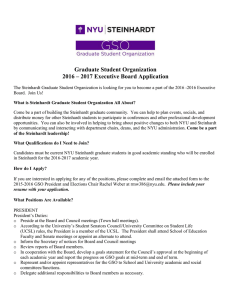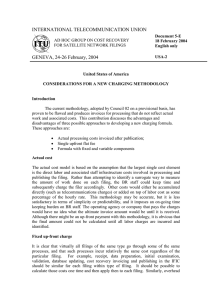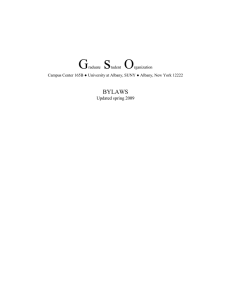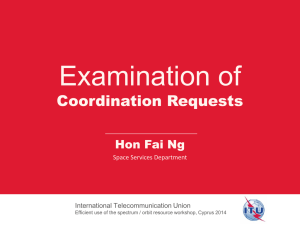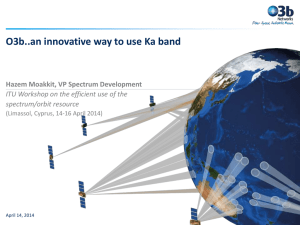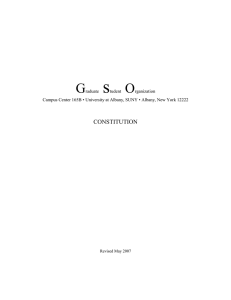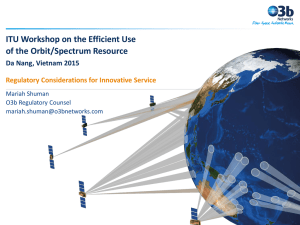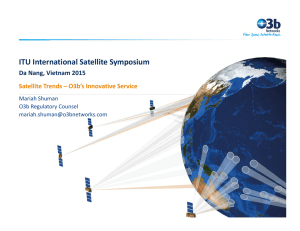BR workshop on non‐geostationary constellation issues Contribution by O3b
advertisement
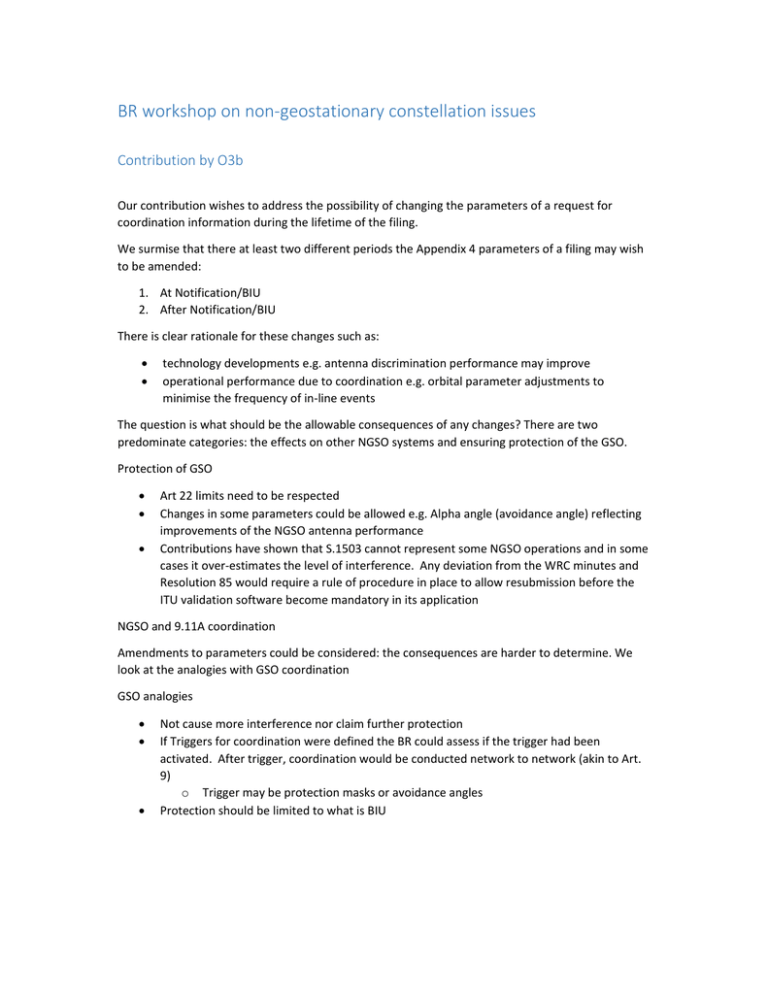
BR workshop on non‐geostationary constellation issues Contribution by O3b Our contribution wishes to address the possibility of changing the parameters of a request for coordination information during the lifetime of the filing. We surmise that there at least two different periods the Appendix 4 parameters of a filing may wish to be amended: 1. At Notification/BIU 2. After Notification/BIU There is clear rationale for these changes such as: technology developments e.g. antenna discrimination performance may improve operational performance due to coordination e.g. orbital parameter adjustments to minimise the frequency of in‐line events The question is what should be the allowable consequences of any changes? There are two predominate categories: the effects on other NGSO systems and ensuring protection of the GSO. Protection of GSO Art 22 limits need to be respected Changes in some parameters could be allowed e.g. Alpha angle (avoidance angle) reflecting improvements of the NGSO antenna performance Contributions have shown that S.1503 cannot represent some NGSO operations and in some cases it over‐estimates the level of interference. Any deviation from the WRC minutes and Resolution 85 would require a rule of procedure in place to allow resubmission before the ITU validation software become mandatory in its application NGSO and 9.11A coordination Amendments to parameters could be considered: the consequences are harder to determine. We look at the analogies with GSO coordination GSO analogies Not cause more interference nor claim further protection If Triggers for coordination were defined the BR could assess if the trigger had been activated. After trigger, coordination would be conducted network to network (akin to Art. 9) o Trigger may be protection masks or avoidance angles Protection should be limited to what is BIU
